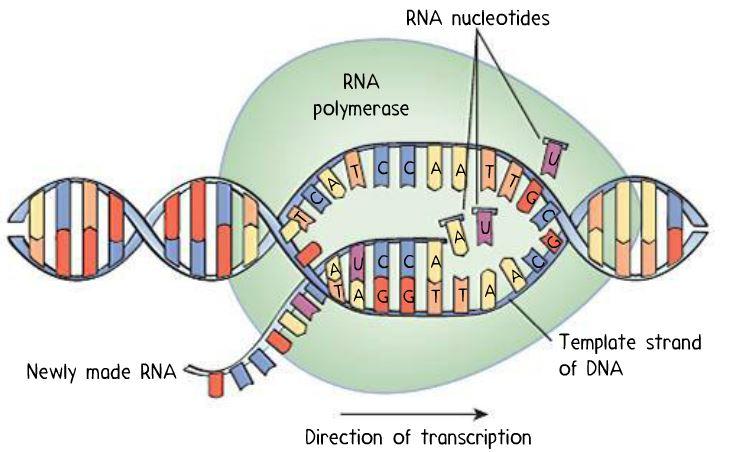Transcription / RNA Synthesis
Key Questions
-
Answer:
mRNA is formed with the help of the codes of the DNA.
Explanation:
Formation of RNA from codes written on DNA is known as transcription, where DNA double helix unzips and unwinds.
Then there are free ribonucleotides which pair up with the complementary bases of one of the exposed DNA strand.
The sugar and phosphate of the neighbouring ribonucleotides keep joining and sugar phosphate backbone of RNA is formed. This pairing up of complementary ribonucleotides along bases of DNA strand is monitored by RNA polymerase , an enzyme.

(
 )
) As at the end of this pairing up process, a new single stranded RNA is formed. The newly formed RNA may undergo processing and will later be used for protein synthesis, i.e. translation.
The video below provides a summary of how the processes of transcription and translation occur using the Shockwave tutorial DNA Workshop from PBS.
-
Answer:
See Below
Explanation:
There are many details of both that you can delve into on wikipedia, but the main difference is:
DNA Replication makes two new double strand DNA molecules from an original double strand DNA molecule (semi-conservative replication).
Transcription makes a single strand of RNA off of the DNA double strand (uses one strand of the DNA as a template and makes a single strand of RNA).
-
Answer:
Transcription is the process where mRNA (Messenger RNA) is made.
Explanation:
Here are the steps of transcription.
1 ~ DNA is unzipped by the "Helicase" enzyme.
2 ~ RNA polymerase adds RNA nucleotides to the new RNA strand. (In RNA, thymine is replaced by uracil.)
3 ~ mRNA is complete when it reaches a stop code on DNA.
4 ~ mRNA then leaves the nucleus and carries the code to the sites of protein synthesis in the cytoplasm. (DNA never leaves the nucleus.)
Hope this helped :)